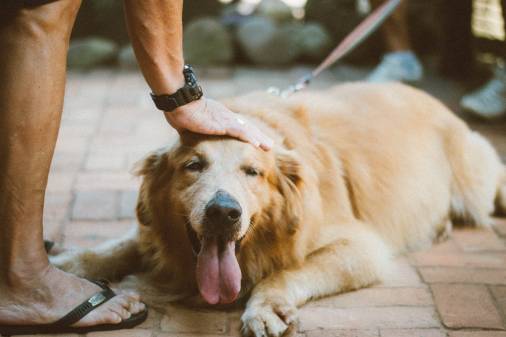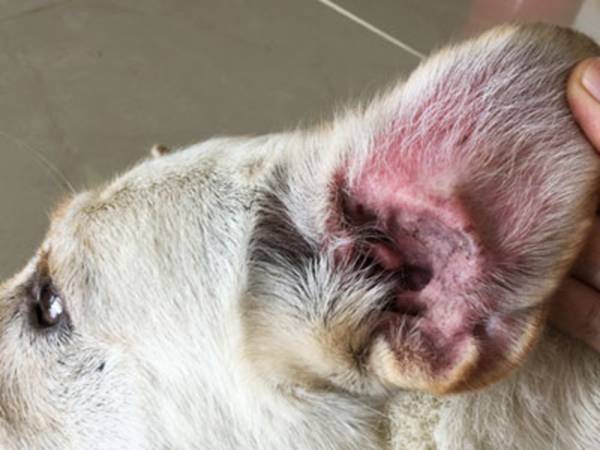When your older dog has a seizure, it’s scary for him and you, especially if this is the first seizure he’s ever had. It’s important to understand that seizures in older dogs can be caused by different types of health issues.
Connect with a verified veterinarian in minutes. Licensed vets are available 24/7 to answer your questions. No need to worry about your furry family member.
The main thing to understand is that if your dog has a seizure, then it’s important to get him to the vet as soon as possible. Some seizures are harmless, while others are caused by life-threatening conditions. It’s hard to tell the difference, especially if this is your dog’s first seizure.
In this article, we’ll take a look at what a seizure is, what happens during a seizure, the symptoms to watch for, and more. Let’s get started!
What is a Seizure?
A seizure is a neurological condition, which may also be referred to as a “fit” or convulsions (a seizure is not the same thing as a convulsion). The seizure is caused by an involuntary electrical disturbance in the brain. This may cause body movements the dog can’t control, changes in behavior, or even loss of consciousness. When dogs have seizures that are recurring, the condition is known as epilepsy.
Seizures in dogs may be no more than a twitch or may involve the entire body. One of the most common types of seizures in dogs is called a grand mall seizure. This is a seizure that affects both sides of the brain. This type of seizure can cause loss of consciousness and the dog’s body to move without control.
Another type of seizure that dogs can experience is called a focal seizure. This type of seizure affects one side of the body or one limb. This type of seizure can remain the same; however, in some cases, focal seizures may become more generalized as time passes.
What Happens During a Seizure?
During a seizure, the dog may have tremors (have fits), look dazed and out of it, and experience different levels of consciousness. In a grand mal seizure, however, the dog may fall over, become stiff, and then work their legs. The dog may also cry, drool, and become incontinent (urinate).
Afterward, the dog may be confused and disoriented. They may even experience temporary blindness, pace back and forth, wander aimlessly, be hungry and thirsty. It’s possible that some dogs will recover very quickly, while others may take longer to return to normal.

Review symptoms, medications & behavior to keep your pets healthy with a Vet Online in just minutes.
Ask a Vet Live NowDog Seizure Symptoms
Seizures usually come in stages. You may notice these symptoms if your dog has a seizure:
Pre-Ictal stage: this is the first stage of your dog’s seizure. During this stage, you may notice your dog acting fearful, anxious, or even aggressive. He may also want to hide and sleep or stay right beside you. He may seem more clingy than normal.
During this stage, your dog may feel that something is going to happen. He may even cry, howl, or drool. It’s also possible your older dog may lose his balance and coordination.
Ictal stage: this is the second stage of your dog’s seizure. It’s also the stage when your dog will experience the most severe symptoms of his seizure. During this phase, your dog may become confused or seem out of it. He may not seem to understand where he is or how you are.
When the seizure begins, your senior dog may become stiff and not able to control his body movements. He may also lose consciousness. You may notice your dog grinding his teeth, his legs moving uncontrollably, loss of bladder and bowel control, as well as hard muscle spasms.
Post-Ictal stage: this is the final stage of the seizure. It’s during this phase that your dog will begin to recover from the seizure. While outwardly, your dog may look better, his brain and body may still be experiencing symptoms as the seizure ends. Some dogs are sleepy after the seizure. They may also experience confusion, weakness, and dizziness.
What Causes Seizures in Older Dogs?
There are several medical conditions that can cause seizures in older dogs, including:
Metabolic disease: this can include conditions such as Addison’s disease, diabetes, pancreatitis, and hypothyroidism. Tumors can also cause changes in the metabolism that can lead to seizures.
Kidney failure: kidney problems are common in older dogs. The early signs of kidney failure can include increased thirst and urination, bad breath, loss of appetite, lethargy, and vomiting. Seizures may develop when kidney failure becomes more advanced.
Liver disease: can also cause seizures in older dogs. This can occur when a liver starts to fail and is not able to metabolize ammonia that’s produced in the gut. This can lead to ammonia toxicity, dullness, abnormal behavior, and later seizures.
Brain tumors: are more common in older dogs; these can either be benign or malignant. Brain tumors can cause seizures and other neurological symptoms.
Trauma/injury: either of these can lead to seizures in dogs of all ages. However, older dogs have a higher risk of falling or being otherwise injured than younger dogs. A dog may show signs of a stroke or seizure after falling or being injured.
There are additional conditions that can cause seizures in old dogs; however, these are the most common.
What to Do If Your Dog Has a Seizure
The first thing you must do is stay calm and do not panic. It’s definitely scary when your dog has a seizure; however, he completely depends on you when the seizure happens. So, stay calm.
Next, try to time your dog’s seizure. This information can be helpful to the vet.
Do not stick your hand near your dog’s mouth when he’s having a seizure. Dogs do not swallow their dogs during a seizure. However, your dog could bite you badly, causing a serious injury.
Keep your dog away from furniture, stairs, or other objects that could hurt him. It’s best to keep your dog on the floor, where he can’t fall down and get hurt.
Talk to your dog reassuringly as he experiences the seizure. Stay right by his side and reassure him throughout the entire seizure.
If the seizure lasts longer than 2-3 minutes, it’s possible the dog’s body temperature will rise. This can lead to hyperthermia. To avoid this problem, apply cold, wet towels to your dog’s neck, paws, and groin. This will help to keep his body temperature from rising too high.
When the seizure is over, and your dog is in a safe place, call the vet immediately. Call the vet even if your dog appears to act normally after the seizure.
Seizures can be caused by all types of health issues, some of which are not very serious. However, sometimes seizures in older dogs are a sign of a serious health condition. This is why it’s imperative to have your dog checked as soon as possible after a seizure.
Once your dog has a diagnosis, then it’s crucial to follow the vet’s care instructions. Treatment will involve caring for the underlying condition. If your vet prescribes medication for your dog, be sure to give it on time and at the right dose. Your older dog deserves to live without seizures.
Connect with a verified veterinarian in minutes. Licensed vets are available 24/7 to answer your questions. No need to worry about your furry family member.

Tom
Tom has always loved to write since he was little - he wanted to be either a writer or a veterinary doctor, but he ended up being a professional writer while most of his works are based on animals. He was born in San Francisco but later moved to Texas to continue his job as a writer. He graduated from the University of San Francisco where he studied biotechnology. He is happily married and a soon to be father!
Review symptoms, medications & behavior to keep your pets healthy with a Vet Online in just minutes.
Ask a Vet Live Now



